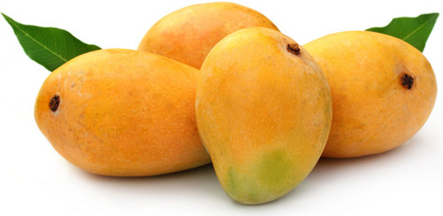Rich, aromatic and sweet, for any Indian the idea of summer is incomplete without savoring ripe or raw mangoes. can be blissful! Mango was named ‘Aam’ because it was commonly found and is favourite of the rich as well as poor. Maharashtra is the largest mango exporter in the country, and accounts for over 80 per cent of the total exports across the world. The area covered for cultivation of mango was 40,000 hectares in Maharashtra in 1990, now it is 4-5 lakh hectares. This has given a boost to food processing industry. The State is home to huge mango biodiversity and the rich Konkan region is one of the largest mango growing belts in the country. Around 205 varieties of mangoes can be found in the Western Ghats in Maharashtra and it is the only State which has obtained the Geographical Indication (GI) tag for Devgad Alphonso mango. Another interesting point to note is that the size and shape of mango has a great deal of significance. Most of the mango varieties are predominantly named based on their size, shape, taste, aroma and liking of various Kings or Emperors.
Alphonso- The King of Mangoes : Alphonso is also known by different names in different regions, such as Badami, Gundu, Khader, Appas, Happus, and Kagdi Hapus. It has long been one of the world’s most popular fruits and is exported to various countries. It has a rich, creamy, delicate, non-fibrous and juicy pulp. As per the research paper, titled ‘Mangoes through millenia’ by Dr. Y N Nene, the mention of mango was found in Upanishadas, Vedas and Mauryan Inscriptions. The original Indian mango breeds were juicy, with lots of fibre and had a short shelf-life. These mangoes in colloquial terms are called today as ‘Raywal’ or ‘Ranwal’ meaning ‘forest breed’. These forest breeds were used to create hybrids like Alphonso as these breeds were better adapted to climate change. Alphonso was named after the Portuguese Viceroy, Alfonso de Albuquerque, who conquered Goa and laid the foundations of the Portuguese Empire in Asia in the 15th century. The main reasons for its popularity among the Portuguese and European officials were that they could include it in their regular meals and, because of its extended shelf-life, it could be sent back home as gifts. Alphonso became the king of mangoes due to its attractive colour and delicious taste that lasts long.
Here’s a quick look at some of the other popular varieties of mangoes that are found in Maharashtra:
- Although Mankurad is extensively produced in Goa, its orchards are found in Ratnagiri and Sindhudurg. This delicious fruit is yellow and oblong, and develops black spots as it ripens.
2. Malgova is a large round shaped mango which retains its green colour with hints of red when it is ripe. It can be seen in the market at the end of the season. It is mostly found in the North Konkan, and in Aurangabad, Parbhani, Beed in Aurangabad district.
3. Kesar is a small to medium fruit with a roundish shape and a distinct curved tip. It has been named after Saffron or Kesar because of its orange hue. It is considered to be one of the rarest mangoes. It is harvested at the beginning of the season and found mostly in North Konkan, Dhule, Jalgaon and Nandurbrar in Nasik district, Aurangabad district and Marathwada.
4. Vanraj has purple skin and brilliant yellow flesh, with sweet and sour flavour profile. It also has good shelf life and is available in the middle of the season. It is found mostly in North Konkan region and Nasik district.
5. Rajapuri is the largest of the Indian mango varieties and has an attractive combination of smooth and unblemished yellow, orange and red skin. It’s strong floral aroma and sweet flavor makes it one of the most popular table and cooking mangoes. It is also good for pickles. It is found mostly in Aurangabad district.
6. Pairi is deliciously sweet in taste with mild tartness and has firm pulp. It is a nutritionally rich fruit with unique flavour and fragrance. Known to be fibrous and juicy, it is one of the most popular choices for the popular ‘aam ras’. It is found mostly in South Konkan region including Ratnagiri and Sindhudurg.
(Information and pictures courtesy: Maharashtra Tourism)


